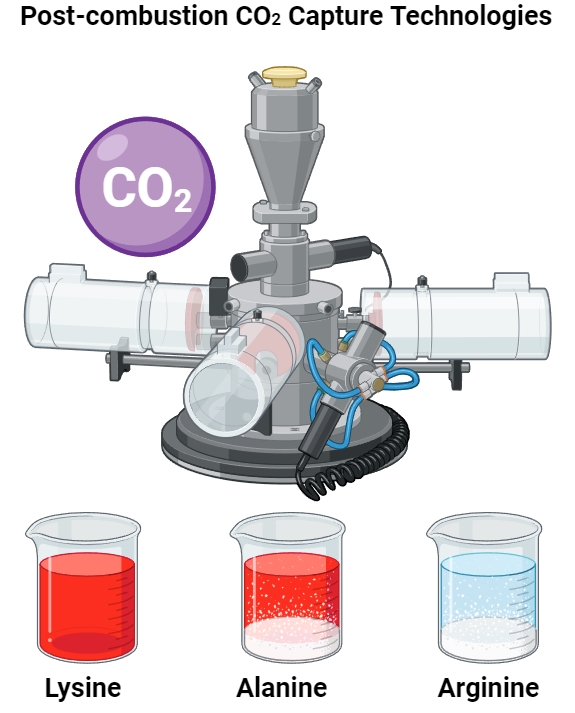
The escalating levels of atmospheric CO2 have underscored the necessity for developing effective carbon capture and storage (CCS) technologies. This study investigates the advancements in post-combustion CO2 capture technologies, specifically examining the efficiency of amine-based absorption and calcium looping methods. Amine absorbents were synthesized using three amino acids—Lysine, Alanine, and Arginine—supplemented with and without NaOH/KOH additives. Absorption trials were conducted in a bench-scale column across a range of temperatures. The calcium looping process involved repeated carbonation and calcination cycles using CaO to capture and release CO2. A statistical analysis employing ANOVA, was utilized to determine the influence of variables such as amine concentration, base concentration, and temperature on the efficiency of CO2 absorption. The study found that Lysine-based absorbents, adding NaOH, achieved a CO2 capture rate of up to 75% at a temperature of 30°C. Additionally, the calcium looping method exhibited consistent cyclic capacities for over 25 cycles, with a regeneration energy requirement estimated at 3.5 GJ/ton of CO2. While the amine-based systems demonstrated higher capture rates, they also required significant energy for solvent regeneration. The statistical analysis confirmed that amine concentration, base concentration, and temperature are critical factors influencing the efficiency of CO2 absorption. The findings of this study underscore the potential of optimized amine solutions and calcium looping as viable strategies for post-combustion CO2 capture, contributing valuable insights that promote sustainable practices in climate change mitigation.
Total file downloads: 26